Unemployment
 The unemployment rate recession model (article link), has been updated with the November UER of 3.5%. The model does not signal a recession.
The unemployment rate recession model (article link), has been updated with the November UER of 3.5%. The model does not signal a recession.
Here is the link to the full update.
The Dynamic Linearly Detrended Enhanced Aggregate Spread:
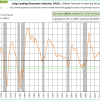
The updated level of this indicator, -259bps, near last months -261bps, confirms the January 2017 signal. Based on past history a recession could have started as early as October 2017, but not later than September 2020. The average lead time to previous recessions provided by DAGS was 15 months which had indicated a possible recession start as early as April 2019. (Note: All our other recession indicators are far from signal a recession.)
CAPE-Cycle-ID
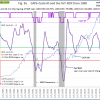 Fig 9a depicts the CAPE-Cycle-ID and the year-on-year rate-of-change of the Shiller CAPE; the level switched from 0 to +2 end of October-2019. This indicator is described here.
Fig 9a depicts the CAPE-Cycle-ID and the year-on-year rate-of-change of the Shiller CAPE; the level switched from 0 to +2 end of October-2019. This indicator is described here.
To avoid the bear market, exit stocks when the spread between the 5-month and 25-month moving averages of S&P-real becomes negative and simultaneously the CAPE-Cycle-ID score is 0 or -2. (read more)
Estimated Forward 10-Year Returns
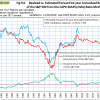 The estimated forward 10‐year annualized real return decreased to 6.1% (previous 6.2) with a 95% confidence interval : 4.7% to 7.5 (previous 5.0% to 7.7%).
The estimated forward 10‐year annualized real return decreased to 6.1% (previous 6.2) with a 95% confidence interval : 4.7% to 7.5 (previous 5.0% to 7.7%).
iM-GT Timer
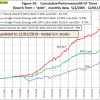 The iM-GT Timer, based on Google Search Trends volume switched into the markets on 12/02/2019. This indicator is described here.
The iM-GT Timer, based on Google Search Trends volume switched into the markets on 12/02/2019. This indicator is described here.
Trade Weighted USD
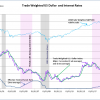 The trend of Trade Weighted $ value is indeterminate and remains strong even though federal fund rates have been reduced.
The trend of Trade Weighted $ value is indeterminate and remains strong even though federal fund rates have been reduced.
TIAA Real Estate Account
 The 1-year rolling return for the end of last month is 4.94%, down from last month. A sell signal is not imminent.
The 1-year rolling return for the end of last month is 4.94%, down from last month. A sell signal is not imminent.

Leave a Reply
You must be logged in to post a comment.